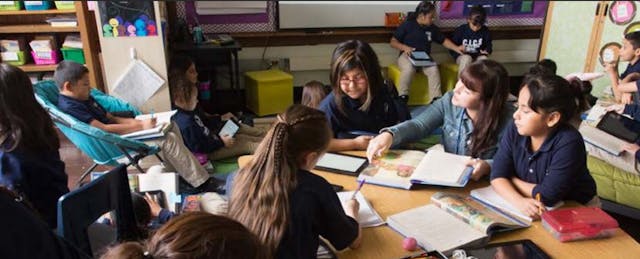How about this for a "leap day" special:
Chicago nonprofit, LEAP Innovations today is releasing the results of its 2014-15 pilot network evaluation--a project that involved 15 schools and more than 1,600 students from across Chicago, The results have been eagerly anticipated, both because LEAP has been taking a cautious approach to evaluating edtech products and because its influence could be huge. The organization has received more than $5 million in funding to lead a confederation of organizations around the US that aim to conduct and evaluate edtech pilots.
What did LEAP learn?
"A great deal, starting with how to best focus and evolve the LEAP piloting process, and how to inform the processes of other educators, organizations, and districts piloting around the country," notes the report.
Translation: Assessing edtech products takes more than a quick thumbs "up" or "down." Any "success" depends heavily on the practices that a school community puts in place as it begins to use the tool.
Ultimately the LEAP report concludes "Analysis showed promising, statistically significant impact." It saves its clearest praise for two literacy tools in particular: ThinkCERCA and Lexia Reading Core5.
Here's how LEAP got there: More than 50 schools and 29 companies applied to part of LEAP's pilot program. The group ultimately chose to investigate six independent tools at 16 schools and winnowed its analysis down to just two tools (ThinkCERCA and Lexia) and 15 schools.
The report concludes, "As an initial indication of what personalized learning and edtech in the hands of forward-thinking educators can achieve, this result is incredibly encouraging." the report states. In particular the researchers found that low income students closed the achievement growth gap by 45%, "nearly closing the gap for Black students and more than closing the gap for Hispanic students." Lexia Reading Core5 and ThinkCERCA were the tools that showed a "statistically significant impact" on student learning.
Even more telling: LEAP chronicles how "the majority" of companies lack "reliable, research-based recommendations on how much students should use their product or how they should progress through the product."
LEAP also asserts that students made the greatest gains using either a whole class, 1:1 implementation or a supplementary 1:1 instruction--more so than the touted "station rotation" models. Yet the supplementary 1:1 class "comes with built-in extra instructional time," the report notes.
As a result, "one can't distinguish the impact of technology from the impact of time."
That conclusion makes sense: In any field, one of the most powerful influences of technology involves how it spurs people to change their behavior. If technology tools provide teachers with ways to spend more time with students, then the tech is doing its job.


